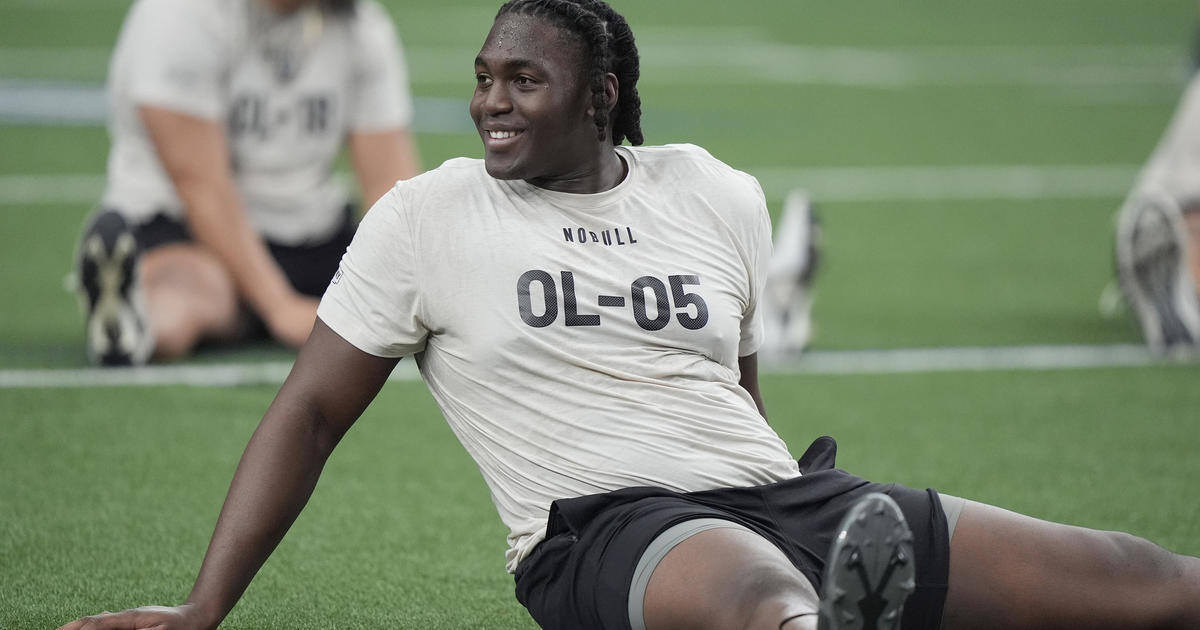Game-Changing Technology: Concussion Goggles
Follow CBSMIAMI.COM: Facebook | Twitter
MIAMI (CBSMiami) -- If your child plays sports, football or soccer, for example, every time they take a hit you cringe and hold your breath.
The concern about concussions among athletes of all ages has researchers looking for better methods of diagnosis.
The NFL, Under Armour and GE have awarded a $500,000 grant to the University of Miami to develop new technology that will help doctors and trainers make an accurate diagnosis about concussions right on the sidelines.
Concussions have dominated the headlines in the world of sports with lawsuits, long-term brain damage, suicide and even a soon-to-be-released movie. But there is a debate about whether enough is being done to protect athletes.
Dr. Michael Hoffer, University of Miami Otolaryngologist spent 21 years in the military and served two tours in the Middle East dealing with injured soldiers.
"I saw 3,000 people that were injured in Iraq or Afghanistan. So it didn't take the NFL to let me know there was an issue," says Dr. Hoffer.
During his time in the military, he developed concussion-detecting technology that U-health is now working to perfect. It's technology that could be used on the sidelines from youth to professional-level athletes.
UM athletes are helping test these goggles that make the process of concussion-testing faster and do so with the highest possible accuracy.
Dr. Hoffer says, "Dizziness, eye motion, vestibular... are our best objective signs. How can we measure them or how can we determine what happens in patients with mild traumatic brain injury versus people who don't have that."
The way to do that is to narrow down a series from about 40 tests to 14 or 15. The goggles use the most objective form of testing to evaluate dizziness, eye movement and hearing.
Dr. Mikhaylo Szczupak says after a concussion, a person's eyes might latterly rattle. "When they're trying to smoothly follow a target, or when they're trying to fixate on a target. You can see jerking eye movements."
The goggles eliminate the possibility of false test results that rely mostly on a person reporting their own symptoms such as headaches and sleep disorder, as well as cognitive testing.
Dr. Szczupak says, "We're getting numbers. We're getting velocity, acceleration and those types of numbers, as opposed to something that's descriptive or qualitative." He adds, "The goal is to come up with objective data so that one day you don't need a preseason test. You can just put the goggles on someone in the locker room, on the sideline, at your daughter's soccer game [conduct] the test and then determine if you need to go to the emergency room or not."
UM athletes are actually volunteering for the research program. Club soccer and hockey players that have suffered concussions in the past want the technology to prevent long-term effects of brain injury.
Soccer player Alyssa Dearmas says she is glad there is technology to test the student athletes. Having had a concussion before, she's aware of potential problems that could arise in the future.
"I'm a pre-physician's assistant major. And if I were to get a terrible concussion, that can really impair me in my studying and everything else, which could really impair me later in life."
For competitors who are eager to return to the field, the goggles are a welcomed piece of technology on the bench.
Lionel Yarmon is a hockey player who is also participating in the trial of the goggle technology. "It's very simple, it's very quick, it's a 12-minute test. It's actually almost fun. You see the screen. You do some eye tracking movements. It's simple, it's to the point," he said.
While the studies are primarily focused on collegiate athletes, Dr. Hoffer says he wants it to be available for everyone, from the youth level to even those training the pro's.
"We have been to many other fields that do not have a trainer at every game and we've had injuries. It's been kind of hectic when you don't have someone there that can give you the immediate answer," said coach Calese Thompson-Enriquez.
For parents worried about concussions, it's a welcome tool that could protect their children from taking unnecessary risks on the field.
"It's always in the back of your head. Every time they touch the ball. Every play that goes off you're always thinking about that," says parent, Lazaro Balsera.
The goggles still need to be approved by the FDA, which they hope will happen in the next 18 months. And while the University of Miami has no financial interest in the project, Dr. Hoffer says he hopes the ones that will be used for youth leagues will run for less than $5,000.



